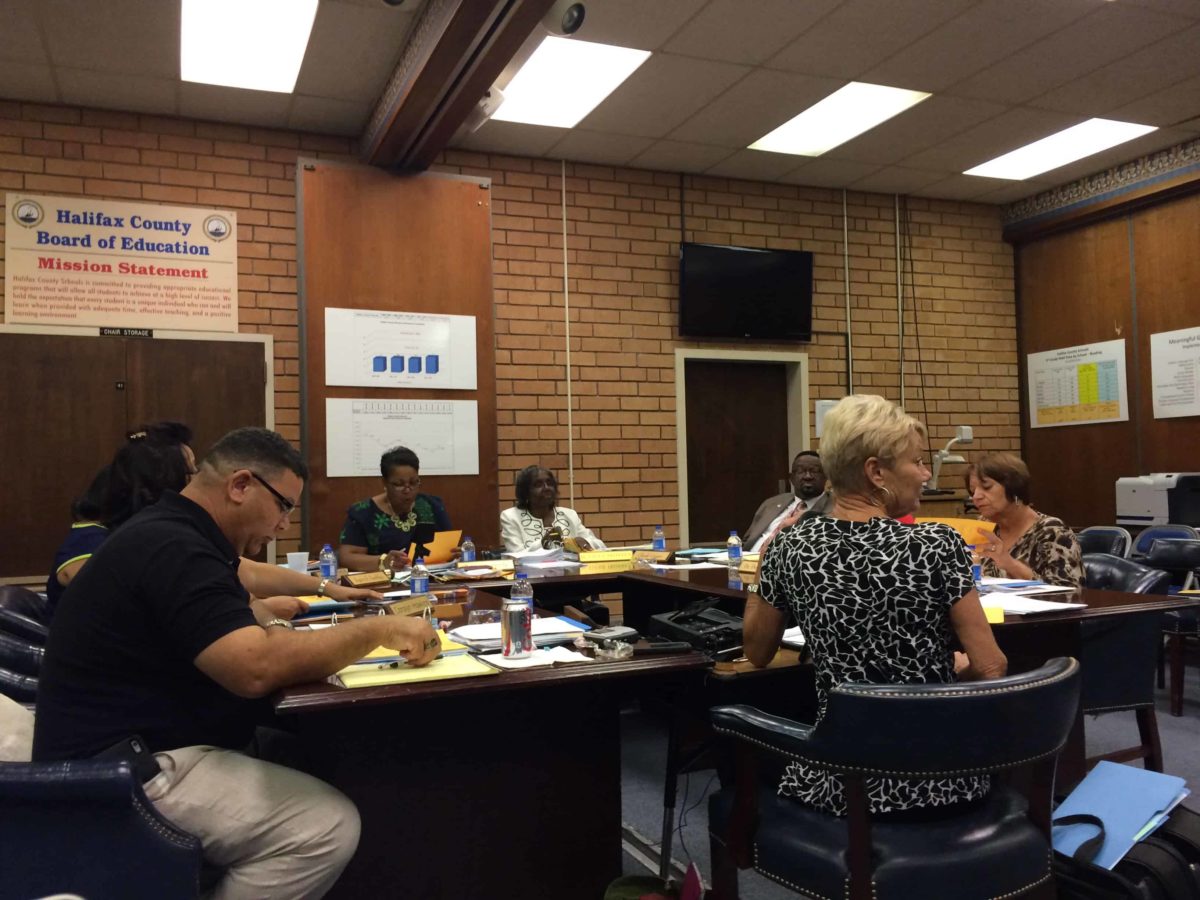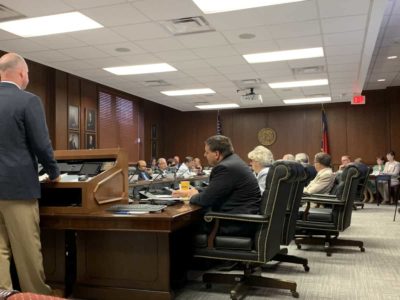
At EdNC, we value public service. We want citizens across the state to run for school board and to do the hard work of making sure all of our students have access to a high-quality education.
We highlight school boards that work well and schools boards that do not – hoping to raise the bar for school board leadership statewide.
In July, the school board meeting in Halifax was arguably obstreperous – it was noisy and difficult to control. Former Board Chair Carolyn Hawkins left during a closed session that likely violated the state’s open meeting laws.
State Intervention
And then, 15 days after we published our article on the Halifax Board meeting, the State Board of Education sent a letter to the Halifax Board, directing them to get pre-approval from the state on hiring decisions, turn over their budget to the state for approval, and enroll students in the North Carolina Virtual Public School if qualified teachers weren’t available for certain middle and high school courses.
“We are concerned that the Halifax Board is making decisions that are unaffordable and that undermine the many quality teachers and principals who are trying to make a difference for students,” said State Board of Education Chairman Bill Cobey in a press release.
See EdNC’s article on the letter here.
Lawrence Armstrong, the attorney who advises the Halifax Board, said the changes aren’t much different from what the board has already been doing.
“Generally speaking, there is no problem,” he said. “There are some specific things that (State Board members) want addressed. It’s not a systemic problem, just particular things that the (Halifax) board has done.”
He would not go into detail on what those “particular things” are.
Armstrong said that personnel from the Department of Public Instruction have been working behind the scenes with Halifax on hiring and budget decisions all along. The directives in the letter just make the State Board’s intervention a little stronger, he says.
“The board members are much angrier about it than I am,” he said. “But I don’t think they’ve had time for it to sink in.”
He also said that the State Board already has all the information it’s asking for.
“You know that DPI has a representative there every meeting, and they’re getting transcripts at every meeting,” he said. “For them to ask for information is a bit repetitive because they have it all.”
The letter from the State Board comes at a pivotal point for North Carolina education. The funding the state received from Race to the Top is all but gone, and without it, Armstrong said the state needed a way to keep an eye on Halifax. They won’t have the “boots on the ground” in Halifax that they once did, he said.
“There are other things that triggered this letter, but behind all of that is that they simply do not have the money to do what they’ve been doing,” he said.
Nancy Barbour, Director of the District and School Transformation (DST) division at DPI, said the end of Race to the Top has nothing to do with the letter that the State Board sent.
She said that DPI had 17 people “providing daily services to Halifax,” at the peak. Plans for services going forward are still being finalized, she said.
A Good Meeting
Before the State Board sent this letter, I had the opportunity to return to Halifax on August 3rd for the monthly Board meeting. It was my first visit since publishing the article about the July meeting referenced earlier.
Debbie Hardy is the new chair, and Joyce Lashley is the vice chair. Hawkins is still on the board though she no longer holds an office, and all members were in attendance for the August meeting. It was an orderly, well-run meeting.
The board celebrated the retirement of a slew of educators in the district and discussed a variety of programs, actions and ideas.
To the extent there was any contentious activity at this meeting, it revolved around a board decision to move kids from a pre-K program at the White Oak Head Start program to Hollister Elementary School. This was done because the kids who lived closer to Hollister were having to take several buses to attend pre-K at White Oak.
Board Member Donna Hunter criticized the move.
“Are we fixing up a class for a group of kids that are already receiving existing services?” she asked. “What I’m hearing now is to uproot everything that we have, and have had… from White Oak to Hollister.”
Board member Charles Hedgepeth took exception to her characterization of the situation.
“Why are you shifting children…to White Oak, and you’ve got…empty classrooms at Hollister?” he asked in response.
The two continued with their back-and-forth, and the debate got testy, but ultimately Hardy reigned it in, saying that both members had enough of a say. The discussion lasted only a few minutes, and the board got on with the business of the district.
It was no more than would be expected from board members holding divergent, passionate views.
At the end of the meeting, Hardy went around the table, thanking each board member individually “for carrying out a good meeting.”
Hawkins also spoke, thanking the board for staying focused and saying that she thought she had something to learn from the expertise of the board members sitting on either side of her — Hedgepeth and Lashley. “I look forward to sitting between two knowledge-based people,” she said.
The Importance of Sunshine
One of the purposes of journalism is to shine a light on the actions and behaviors of public officials. Operating in a vacuum, it’s easy for elected officials to feel as though they they can act without scrutiny. It is also important for the public to be aware.
But we have more to say about Halifax than just what happens at the Board of Education meetings. It’s also important for the state to understand the challenges facing the Board.
First, do you know where Halifax County is?
The population of Halifax County is 52,970 — down from 54,691 in 2010 — sharing about 725 square miles in northeastern North Carolina.
Just 11.8 percent of those 25 and older in the county have a bachelor’s degree or higher — compared to 27.3 percent statewide.
Twenty-seven percent of the county lives below poverty level — compared to 17.5 percent statewide.
The top three employers? The Halifax Regional Medical Center, the Halifax County Schools, and the County of Halifax.
Halifax County is divided into three different school districts: Halifax County School District, Weldon City Schools, and Roanoke Rapids Graded School District.
According to DPI’s Statistical Profile, in 2015, 85 percent of the students in the Halifax County Schools are African-American.
In 2013-14, the Halifax Schools were overwhelmingly made up of students who qualify for free-and-reduced-price lunch programs.
According to the state’s annual report on teacher turnover, in 2013-14, 74 of 236 teachers in the Halifax County Schools left — 31.36 percent, the third highest in the state. The five-year average is 28.27 percent.
In another article, EdNC will be doing a deep dive on the financing of the schools in the Halifax County.
Given the challenges, it may not come as a surprise to learn that not a single school in Halifax County received an A or B on the A-F letter grades for schools across the state. For that matter, only two received a C.
Improving the quality of the school system in Halifax has not and will not be easy, and at the start of every meeting, the Board of Education recites aloud their mission statement:
“Halifax County Schools is committed to providing appropriate educational programs that will allow all students to achieve at a high level of success. We hold the expectation that every student is a unique individual who can and will learn when provided with adequate time, effective teaching, and a positive learning environment.”
We will continue to attend their board meetings and report on their progress as they strive to achieve that mission with the state’s help.






